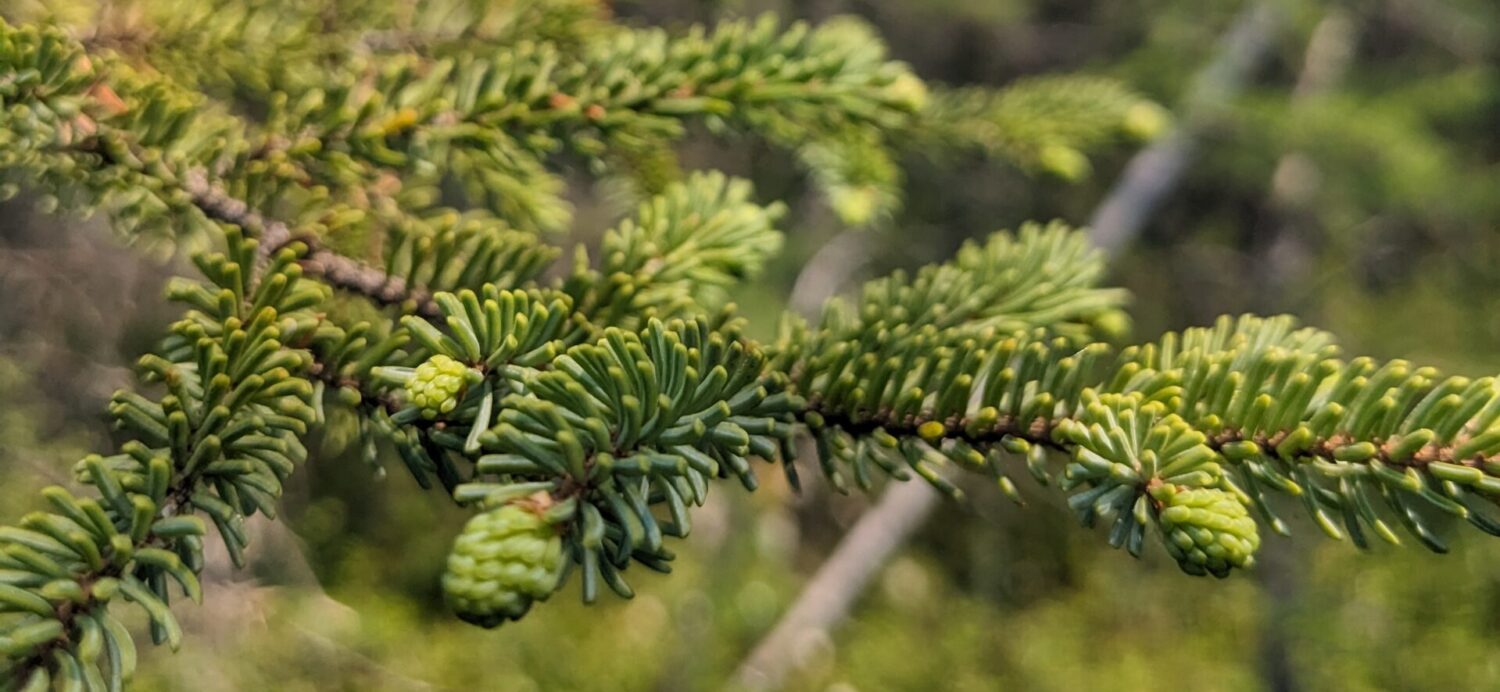The forests of Michigan’s UP are alight with colors this time of year. Many unique wildflowers are in bloom and they can easily be found if you know where to look.
I’ll share a few of the most showy wildflowers I’ve spotted while work in Hiawatha National Forest in mid to late June so far this season.
Red Columbine

Red columbine is identified by the bright red petals that droop like a hanging bell. The genus, “Aquilegia” is derived from the Latin “aquila,” meaning “eagle” and probably refers to the petals’ resemblance to eagle talons.
I found this specimen along a decommissioned forest road near a stand of aspen and balsam fir.
Butterflies, hummingbirds, and other long-tongued pollinators are well-suited to feed on the nectar of this wildflower.
Orange Hawkweed

I have come across the orange hawkweed more and more as June comes to a close. This species is common throughout the upper Midwest and east into Maine and Nova Scotia. It can even be found in the Pacific Northwest and British Columbia.
Native to European alpine meadows, this wildflower has spread throughout Europe, Asia, North America, and even Australia and New Zealand.
In fact, in parts of the US it is not managed by natural resource agencies because it has become so widely distributed.
The bright orange petals stand out on the forest floor and I have seen them growing in abundance on roadsides and grassy aspen stands. It belongs to the daisy family, which makes sense as it’s petals resemble the thin ribbon structure of daisy petals.
Northern Blue Flag

This iris has a similar range as the orange hawkweed however it isn’t distributed beyond the Rocky Mountain Range.
In my experience, I have most commonly found them along the edges of swampy cedar stands, situated among tall, grassy herbaceous plants. The stem is tall (sometimes approaching 3 ft), and the petals are spread in a wide, arching display.
Smooth Rose

I have only seen this flower in one location along a forest service road. Like many other wildflowers, it thrives on roadsides, that narrow strip at the edge of the built environment.
This rose is unique in that it is considered “thornless” though it may have small thorns near the base of it’s stem.
When I saw this one, a bumblebee was buzzing back and forth between it and an adjacent bloom.
Pink Lady’s Slipper

On my first visit to the forest since arriving earlier this month, I saw many lady’s slippers; more than I’ve ever seen before.
A few days later I found even more. They were most abundant in a particular stand of black spruce (Picea mariana) where sphagnum moss created a thick mat over the ground.
I was under the impression lady’s slippers prefer partially shaded sites, but many of these were growing in nearly full Sun.
Wood Lily

When I first saw this lily, again by a forest road, I thought it was the orange day lily I’m so used to seeing in the South. When I stop for a closer look, I realized it was different.
Northern Michigan is one of the most common places to find these flowers in abundance. However, they have even been found sporadically along the Appalachian Range.
These are only the most showy blooms I have found so far in Hiawatha. There are many more that are more common and less conspicuous.
If you have any wildflowers you look forward to seeing during this time of year, share in the comments.

